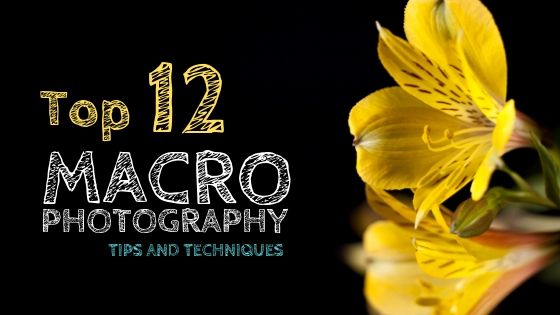Garden photography, with its emphasis on delicate details and vibrant colors, requires lenses that can bring the beauty of nature to life in every frame. In this comprehensive guide, we delve into the world of lenses and sort out the best lens for garden photography, exploring the nuanced features and capabilities that make each lens a standout choice for capturing the mesmerizing allure of botanical landscapes.
Canon EF 100mm f/2.8L Macro IS USM
Canon’s EF 100mm f/2.8L Macro IS USM is a lens designed for the discerning garden photographer. Its 100mm focal length provides a comfortable working distance, allowing you to capture the intricate details of flowers without disturbing their natural setting. The Hybrid Image Stabilization ensures steady shots, especially when shooting handheld in the midst of a garden’s dynamic environment.
Nikon AF-S VR Micro-Nikkor 105mm f/2.8G IF-ED
Nikon’s 105mm macro lens is a botanical marvel. With its Vibration Reduction (VR) technology, camera shake becomes a worry of the past, even in low-light conditions. The lens’s fast f/2.8 aperture not only enables superior performance in various lighting situations but also creates a dreamy background blur, isolating your floral subjects with precision.
Sony FE 90mm f/2.8 Macro G OSS
Sony’s FE 90mm Macro G OSS lens is a true gem for garden photography. The 90mm focal length strikes a balance between working distance and magnification, providing the versatility to capture both intricate details and wider garden scenes. With Optical SteadyShot (OSS), this lens ensures your shots remain sharp and clear, even when handheld.
Sigma 105mm f/2.8 EX DG OS HSM Macro
Sigma’s 105mm macro lens is a reliable choice for garden enthusiasts seeking exceptional optical performance. The Hyper Sonic Motor (HSM) guarantees fast and silent autofocus, essential when capturing the fleeting beauty of insects or the subtle movements of delicate blossoms. The Optical Stabilization (OS) system adds stability for handheld shooting in challenging conditions.
Tamron SP 90mm f/2.8 Di VC USD Macro
Tamron’s SP 90mm Macro lens is a budget-friendly option that doesn’t compromise on quality. The Vibration Compensation (VC) system ensures sharp images, even when shooting without a tripod in a garden’s uneven terrain. This lens excels at capturing the intricate textures of petals and the delicate details that make each bloom unique.
Canon EF 24-70mm f/2.8L II USM
For those who desire flexibility without sacrificing image quality, the Canon EF 24-70mm f/2.8L II USM is an excellent choice. With a versatile focal range, this lens allows you to capture wide garden landscapes and then zoom in for detailed close-ups. The fast f/2.8 aperture ensures consistent performance in changing lighting conditions.
Nikon AF-S NIKKOR 24-70mm f/2.8E ED VR
Nikon’s 24-70mm f/2.8 lens is a workhorse for garden photography. With a robust build and Vibration Reduction (VR) technology, this lens provides stability for handheld shooting, crucial when exploring a garden’s diverse elements. It strikes a balance between wide-angle views and the ability to focus on specific details.
Sony FE 24-70mm f/2.8 GM
Sony’s FE 24-70mm f/2.8 GM lens is a high-performance zoom lens designed for excellence in garden photography. The constant f/2.8 aperture ensures beautiful background blur, allowing your floral subjects to take center stage. The lens’s advanced optics guarantee sharpness across the frame, capturing the nuanced details of each garden bloom.
Sigma 24-70mm f/2.8 DG OS HSM Art
Sigma’s 24-70mm f/2.8 Art lens combines versatility with optical excellence. The Optical Stabilization (OS) system minimizes the impact of camera shake, making it an ideal choice for handheld shooting in a garden’s dynamic environment. This lens is well-suited for photographers who want flexibility in framing their botanical compositions.
Tokina atx-i 100mm f/2.8 FF Macro
The Tokina atx-i 100mm Macro lens is a compact and budget-friendly option for garden photography. With a 1:1 magnification ratio, it excels at capturing intricate details. The f/2.8 aperture creates a pleasing background blur, isolating your subjects while maintaining a natural feel. Its lightweight design makes it easy to carry and maneuver in a garden setting.
Canon EF 70-200mm f/2.8L IS III USM
Canon’s 70-200mm f/2.8L IS III USM lens is a versatile telephoto zoom lens suitable for capturing distant garden elements or creating stunning compressed perspectives. The fast aperture ensures excellent low-light performance, and the Image Stabilization (IS) system is invaluable for handheld shooting, especially when exploring larger garden landscapes.
Nikon AF-S NIKKOR 70-200mm f/2.8E FL ED VR
Nikon’s 70-200mm f/2.8 lens is a telephoto powerhouse with advanced optics. The fluorite elements minimize chromatic aberrations, ensuring crisp and vibrant images. The Vibration Reduction (VR) technology enhances stability, making it an ideal choice for garden photographers who want to explore the details of distant blooms.
Sony FE 70-200mm f/2.8 GM OSS
Sony’s 70-200mm f/2.8 GM lens is designed for excellence in telephoto garden photography. The fast and constant aperture, coupled with advanced optical elements, delivers stunning clarity. The Optical SteadyShot (OSS) technology ensures sharp images, even when shooting handheld in expansive garden settings.
Sigma 70-200mm f/2.8 DG OS HSM Sports
Sigma’s 70-200mm f/2.8 Sports lens is built for durability and optical excellence. The Hyper Sonic Motor (HSM) ensures fast and accurate autofocus, while the Optical Stabilization (OS) system minimizes the impact of camera shake. This lens is an excellent choice for garden photographers who want to explore the details of distant subjects.
Tamron SP 70-200mm f/2.8 Di VC USD G2
Tamron’s 70-200mm f/2.8 G2 lens combines versatility with advanced features. The Vibration Compensation (VC) system provides stability for handheld shooting, and the eBAND and fluorine coatings minimize flare and ghosting. This lens is perfect for capturing both intimate garden details and distant scenes with exceptional clarity. And falls as the best lens for garden photography.
Conclusion – Lens for Garden Photography
In conclusion, the lenses mentioned above cater to a spectrum of preferences, from macro enthusiasts capturing the intricate details of blooms to telephoto aficionados exploring the beauty of distant garden elements. As you embark on your garden photography journey, consider the unique features of each lens and how they align with your creative vision. With the right lens in hand, you’ll be well-equipped. And make sure your images look top notch and use a photo editing service for this.






